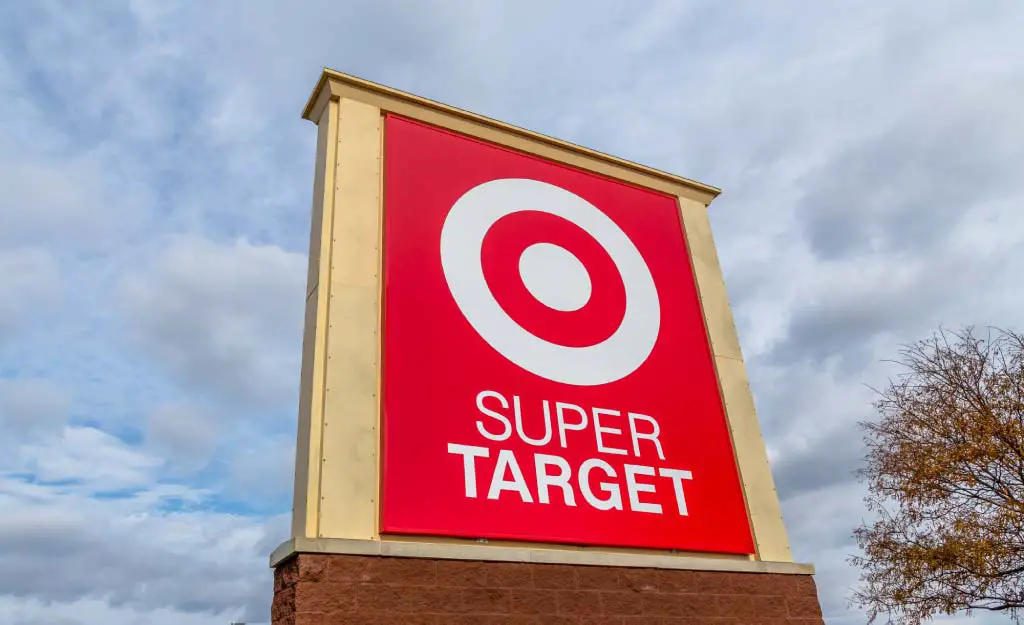As Target began expanding to various locations in the 1980s, its increasing popularity presented the need for bigger stores to cater to a more significant number of consumers. Thus, Super Target was introduced in the 1990s.
The Super Target is a larger version of a traditional Target, with each hypermarket encompassing 175,000 square feet on average, compared to the 135,000 square footage of a customary store. These bigger stores provide a more comprehensive shopping experience by offering a wider selection of grocery, garments, and household items while including other facilities like a bakery and a deli counter.
Want to learn everything about Super Target, including popular locations and new branding? Keep on reading!
When Were Super Target Stores Introduced?
The first Super Target store opened in Omaha, Nebraska, in 1995. The idea was to expand the Target Greatland format and combine it with a grocery store. This, for the first time, allowed the purchase of fresh produce, meat, and dairy along with other household and fashion picks at Target.
Target Greatland was initially introduced in 1990 to enhance its customers’ shopping experience. The Greatland format was almost 50% larger than your average Target store, with ATM facilities, quicker checkouts (owing to wider check lanes), price scanners, a more extensive pharmacy, and a Food Avenue. The Greatland concept then became the foundation for the Super Target store format for a one-stop-shop experience. The Super Target stores offered everything a Target Greatland did, with the addition of fresh produce.
In recent times, all these facilities have also been introduced at regular Target stores with the roll-out of the PFresh format to allow universal shopping convenience. Although, up until then, fresh produce with general merchandise was only available at the Super Target stores.
Which States Have Super Target Stores?
Target is no stranger to the retail market. After opening its first store in 1962, the retail giants have since been increasing in number by ten folds. As of 2022, Target has more than 1900 stores in all 50 US states. However, the Super Target stores only make up 13% of Target locations nationwide.
There are 239 Super Target stores in the US altogether, spreading across various states.
Many states that feature a Super Target store also have a traditional Target. The US states where you can find the hypermarket Target format include Alabama, Tennessee, Missouri, Texas, Minnesota, Mississippi, Virginia, North Carolina, Illinois, Kansas, Colorado, and Indiana.
Keep in mind that various Super Target stores may contain products unavailable at the customary stores. (More on this below).
Target Vs. Super Target: What’s The Difference?
The most notable difference between a standard Target store and its Super version is the size. On average, Target stores are 135,000 square feet, whereas the Super Target counterparts are approximately 175,000 square feet. However, a few other differences help separate the two big box store formats.
We know that the need for a bigger Target store, offering more amenities arose with providing regular Target customers with a complete shopping experience. The retailer also hoped to rope in new shoppers with a one-stop-shop plan. Thus, apart from the size, the merchandise variety also differs.
The Super Target stores house more fresh produce and expanded versions of general merchandise departments than regular Target stores. Despite the PFresh grocery concept added to numerous traditional Target locations, the stores offering fresh produce are only about 1500 square feet bigger in size. Thus, even with fresh food and other sizable grocery items, the standard Target stores occupy much less space than the Super format.
Therefore, the Super Target stores, much larger in comparison, offer more fresh food and other amenities, such as a better selection of meat than the average store.
In the beginning, you only got Starbucks Coffee from Super Target locations. However, a 2002 deal saw the service extended to various existing and new general merchandise stores, considering the space. Much like Starbucks, many of the services that were once exclusive to Super Target are now available in general merchandise stores across the US.
Although, if the Super Target store does not have exclusive merchandise or services, they usually have a more extensive collection of products – even if the same things are available at a regular Target store.
Where Is The Biggest Super Target Store?
As we said, the size of the Super Target store is its primary identifier. However, not all Super versions are the same size. While the average square footage of the Super Target store is around 175,000 square feet, the largest location of this particular store model is even bigger.
The largest Super Target store in Alabama is a whopping 191,000 square feet, much larger than your average Super Target size. However, there is an even bigger Target store in Maryland, approximately 204,00 square feet. It is only fashioned as “Target” with the famous bull’s eye logo despite its size.
How Does Super Target Compare To The Small-Format Target Stores?
While Super Target stores occupy big spaces and offer a wider variety and stock of amenities, on the other end of the spectrum are the small-format stores by the retailer. Previously known as City Target and (even smaller) Target Express stores offer the same services as the traditional stores but occupy a fraction of the space.
The small-format stores are usually anywhere between 12,000 to 80,000 square feet, compared to the approximate 135,000 and 175,000 square feet of a standard Target and Super Target store.
The idea of the small-format stores is to establish a consumer base in urban areas, where space for traditional or Superstores is an issue. Although they offer much of the same things as their mammoth counterparts, the smaller Target stores have a limited amount of selection. For example, the pharmacy section at an urban area Target is usually half the size of the more traditional store.
In simple words, smaller format stores offer similar products and services (hello, same-day delivery!) to the bigger ones, just with much less variety.
Super Target Rebranding: Things To Know
There are Target stores where you can still see the “Super” prefixed to the retailer’s name. However, in 2015, the retail giants announced, addressing the rebranding of their smaller format stores, that whatever the size, all big and small Target locations will be rebranded as just “Target.”
Although, the rebranding does not see the corporation move away from its various store formats to fit consumer needs better. While Target will still add big and small stores to multiple locations, they will simply be called “Target.” Thus, the concept of the Super Target stores and their smaller versions will remain the same, but their differentiation based on their emblem will be nullified.
So, Target will not be building any new Super Target stores branded as such, regardless of their size.
The Bottom Line
A Super Target store is a more extended version of the traditional Target store, which usually offers more merchandise variety and fresh produce. Although with the roll-out of the PFresh concept, the SuperTarget stores do not exclusively sell fresh groceries anymore, they still have more products in stock and more choices, thanks to their gigantic size. However, in 2015, Target announced that all its stores would now simply be called “Target, regardless of the size.” Thus, the retailers will no longer be building any store with the Super Target branding, even if they are larger than the average 135,000 square feet of common store space.

